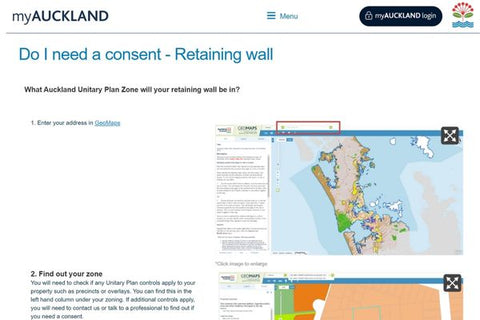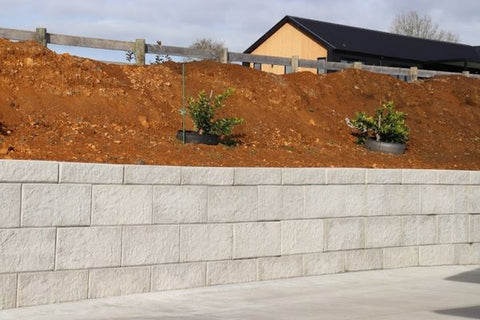As a homeowner, building a retaining wall can be an intimidating endeavour if you don’t know where to start. It’s important to seek simple, cost-effective solutions while being able to bypass the construction industry jargon. Understanding the overall process, from quoting, to installation, and maintenance, can help ease any confusion and ensure a successful outcome.
We have put together a guide for homeowners who are investigating solutions for retaining walls. If you are needing a standard or conventional retaining wall, this guide will serve as an easy-to-follow checklist to get you started and prepared.
Remember, the homeowner assumes responsibility to check this list and ensure their designed retaining wall meets the requirements and regulations for installation.
Council Consent
While most types of walls do need consent from the council for safety, some do not. However, retaining wall requirements may vary between different councils. So, it’s important to check with your local council, and make a note of what you need.
Walls that are less than 1.5 metres high, and support nothing such as a garden, often don’t need consent. If you're in Auckland, use this tool to give you a rough idea of if you need consent or not.

(Auckland Council's Retaining Wall Tool)
Buildability
There are many external factors to a retaining wall to consider, therefore, construction of the wall needs to be realistic and designed thoughtfully.
For example, consider:
- Consider how trucks and other large machinery will access the site. Is the space large enough for them?
- Can the blocks get to the planned retaining wall location?
- Is there adequate drainage for rain and water?
- If you have a sloped property, consider how the slope, surrounding buildings, and structures might be affected in the event of storms, heavy rain, or even natural disasters such as earthquakes.
- Heavy rainfall or natural disasters can put pressure on retaining walls if they’re constructed on a slope. They are at risk of cracking, moving, or even collapsing, which is, of course, a safety concern. There are several factors that can put slopes at a higher risk. For example, if the surface material is soft or loose, comprises of mostly soil, has a gradient of over 35 degrees, or if the slope has been cut into. Take the time to research signs and other risk factors for slopes before going ahead with a design.
- Make sure you consider any other restrictions to the site. Check for blockages such as trees. Also, make sure the ground you are planning to build upon is solid and not soft.

- Retaining walls are a structure and therefore, need to be designed with expert engineering. Getting the help of a contractor, such as a Stonebloc Accredited Contractor, will help avoid any headaches. Stonebloc Accredited Contractors are professionals who will understand how your project will work best with Stonebloc.
Tip: Take some photos of where you want your retaining wall to be constructed. Send them to your Envirocon representative who will help determine what you need.
Engineering Consent
Specific engineering is used mostly for consent purposes. Be sure to consider the following:
- If you need council consent, you do need a site-specific design.
- If your site conditions lay within a number of Stonebloc ready-made designs, you will only require an engineer’s short review.
- Allow time to issue design calculations for a PS1 document, which is a producer statement used for specialist work such as engineering. A producer statement such as a PS1 helps the council determine whether the building work meets the Building Code regulations.
- Geotech report and pass it on to a consultancy for the design and consent process. Geotechnical engineers are important as they help calculate factors that will influence how the retaining wall will be designed and built, such as considering how much weight the site and wall itself can hold.
While designing and building a retaining wall for your home can seem daunting, it doesn’t have to be. Nor does it have to break the bank. This checklist should breakdown the tasks you need to do and provide a place for even newbies to begin. Following this checklist will reduce delays, unnecessary costs, and ensure your retaining wall is safe, durable, and aesthetically pleasing.
Steve and Sopa are a Pokeno based couple who recently chose to work with Stonebloc to build their retaining wall. They wanted to create a retaining wall where their fruit trees could grow above, while doubling as an entertainment area for their home. The couple were meticulous and heavily researched the design and buildability of their retaining wall plan. This helped ensure a successful construction of their retaining wall and will make sure it stands the test of time.

(Steve & Sopa's Stonebloc retaining wall, with their fruit trees sitting on top)
After reviewing the checklist, we’d recommend reaching out to our Stonebloc representative to see how Stonebloc would work for you and your home.









